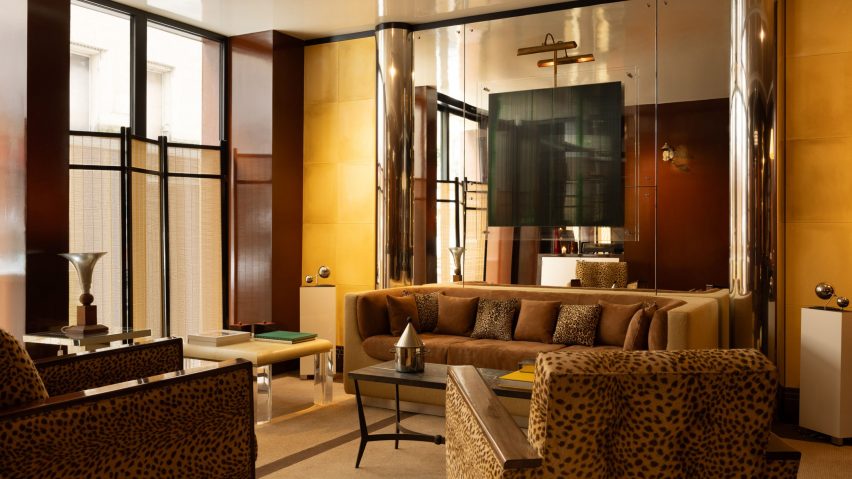
Necchi Architecture takes cues from retro nightlife at Hôtel Château d'Eau in Paris
Interior design studio Necchi Architecture has combined lacquer, chrome and retro design accents to evoke the "uninhibited atmosphere" of the disco era at the Hôtel Château d'Eau in Paris.
The 36-room hotel is located on Rue du Château d'Eau in an area that was the hub of 1970s nightlife with the iconic club Le Palace, frequented by Yves Saint Laurent and Kenzō Takada, and the home of French musician Serge Gainsbourg, nearby.
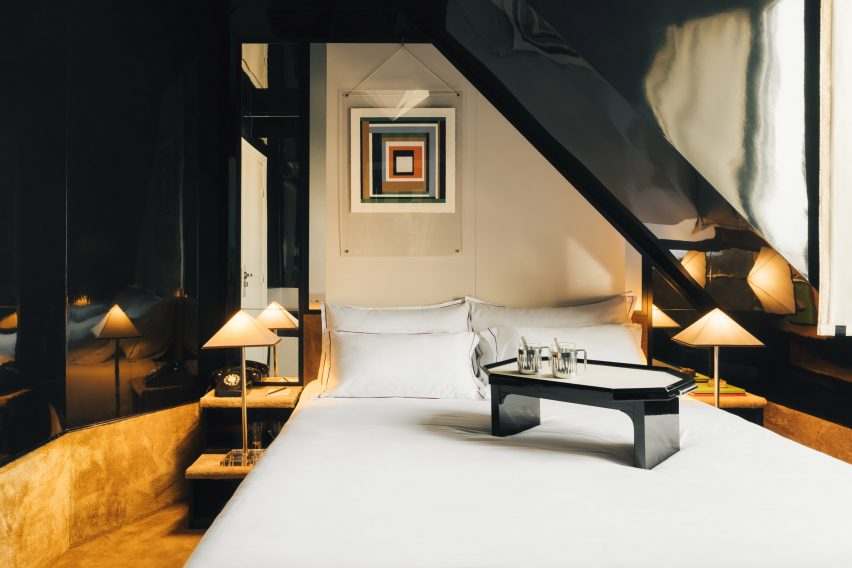
It is this avant-garde attitude of Parisian nightlife that Necchi Architecture aimed to imbue into the sultry and highly stylised interiors of Hôtel Château d'Eau.
"[We aimed] to reflect an attitude, rather than a particular décor; one that is reflective of the Château d'Eau areas recent history and character," Necchi Architecture co-founder Alexis Lamenta told Dezeen.
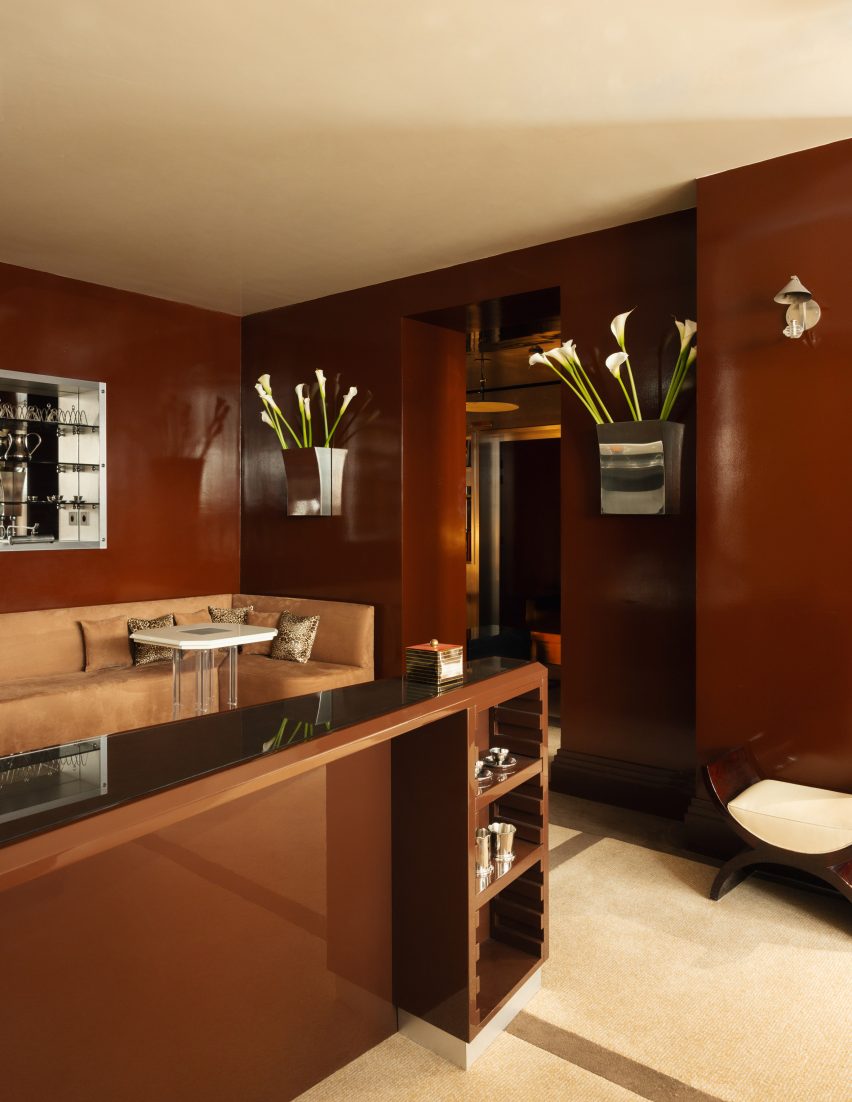
Upon entry guests are greeted at a curved reception desk clad in chrome panelling and bookended by matching chrome lamps.
The space, wrapped in a dark burgundy gloss, flows into an "intimate fumoir" featuring chrome columns, mirrored panels and wall mounted vases.

The lounge area, which also doubles up as a breakfast room, is filled with antique and collectible furniture and decorative pieces, intended to create the feeling of a "suave and lived-in space" where guests can relax.
Leopard print is introduced as a key design element with the placement of a pair of antique Italian ceramic leopards in the lobby area. This 1970s print is replicated throughout the decor, featured in soft furnishings, the hotels exterior signage and the winding staircase carpeting.
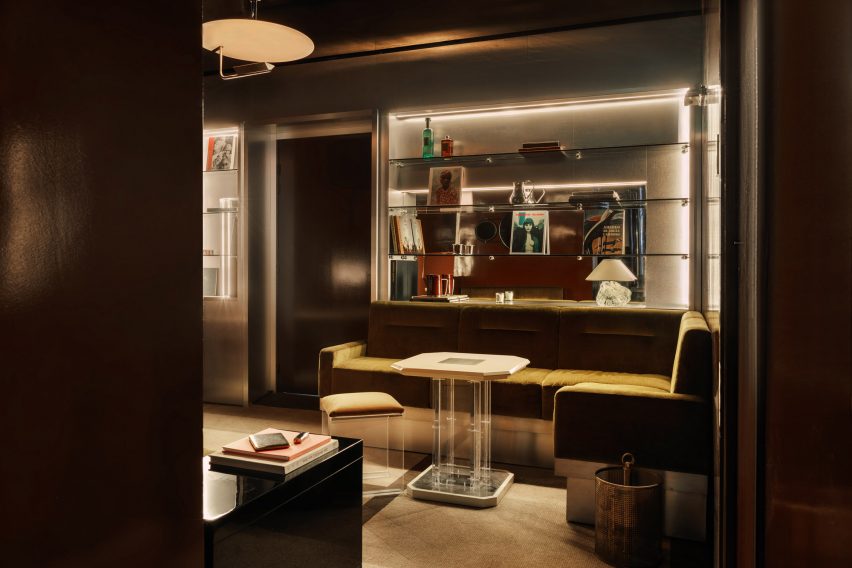
The bedrooms are defined by deep pile carpets, with lower level floors featuring lime green, ascending to deep purple on the next floor, then graduating to a bronze-toned orange on the hotel's top level.
This statement carpet envelopes the lower portion of the bedrooms, covering the skirting, the bespoke side tables and the bedstead.
"We imagined a scenario for the bedrooms where all needs are focused around the bed," explained Lamenta.
"The mini bar is integrated into the bedside tables, the wardrobes are exposed, and the desk is a mobile tray to place on the bed," he continued.
"This is a bit of a break from classic hotel traditions but we wanted the space to feel tailored to our daily actions."
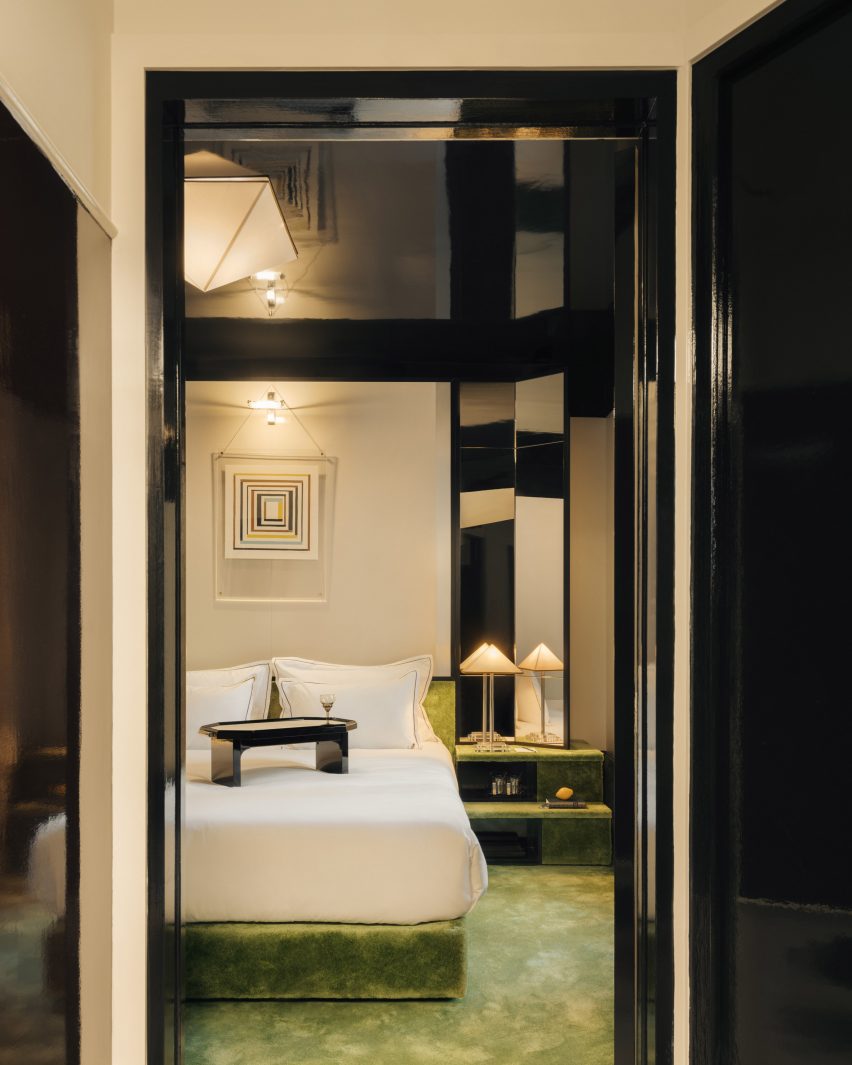
Mirrored glass and high gloss black lacquer panels were chosen in the bedrooms as a "functional detail rather than an aesthetic choice."
"We chose the black lacquer because it helps distort the ceiling height and increase the architectural space," said Lamesta.
"The gloss also brings in natural light at any time of day," he continued. "We used lacquer and mirrors to eliminate any notion of volume, making the natural light more sensual, and – depending on the time of day – it has a vibrant effect."
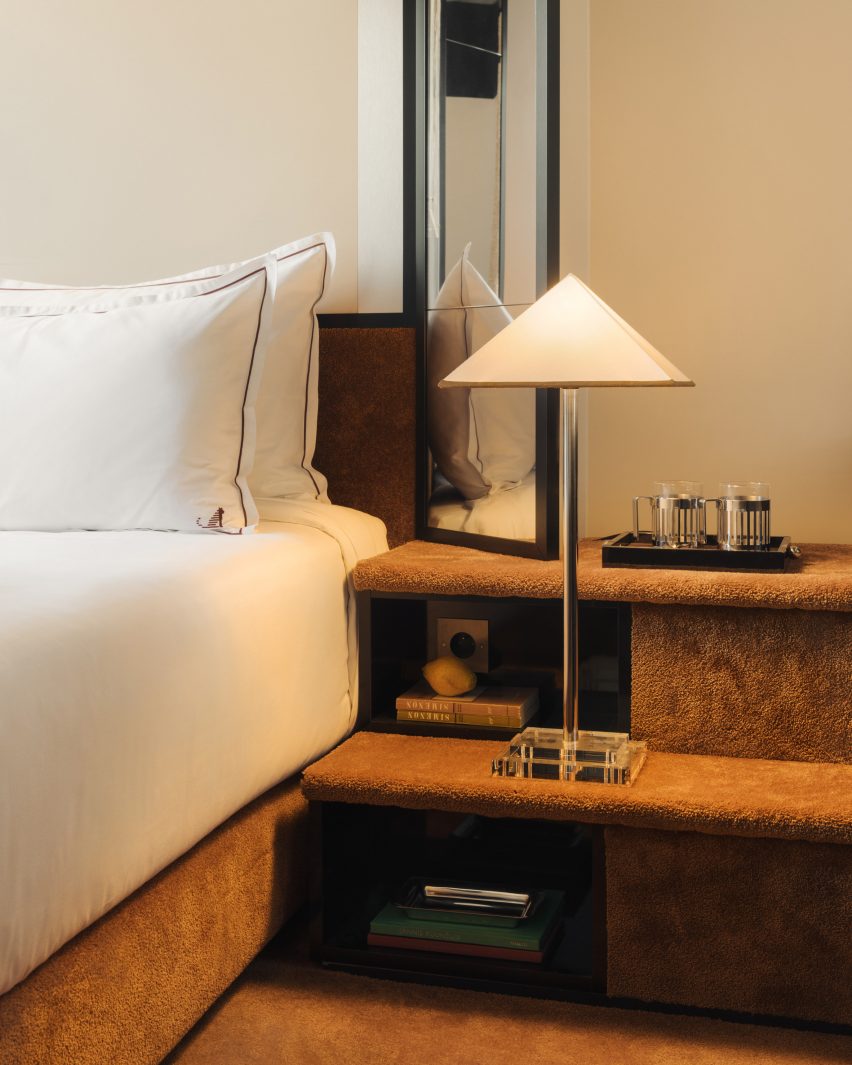
Necchi Architecture also collaborated with Paris-based artist Géraldine Roussel on a series of geometric artworks hung above the beds, made from clear glass and inspired by the Op Art movement.
The graphic identity of the bedrooms continues into the bathrooms with chequered wall tiles, which contrast polished stainless steel basins.
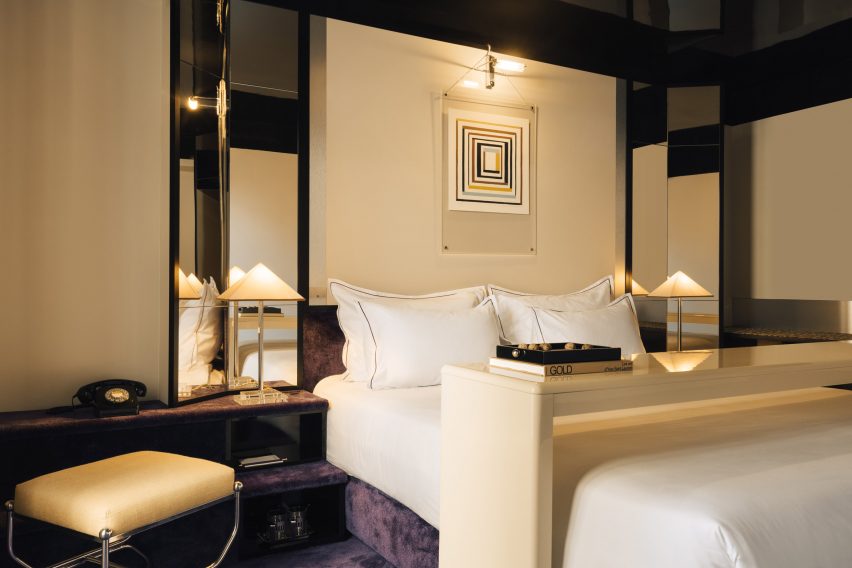
The project is Necchi Architecture's debut hotel and the seventh opening for Parisian group Touriste.
Following Touriste's previous more playful interiors, including Luke Edward Hall's Hôtel Les Deux Gares and Beata Heumans Hôtel de la Boétie, Necchi Architecture were chosen to "bring something a little moodier and more grown up" to the group's repertoire, Touriste founder Adrien Gloaguen told Dezeen.
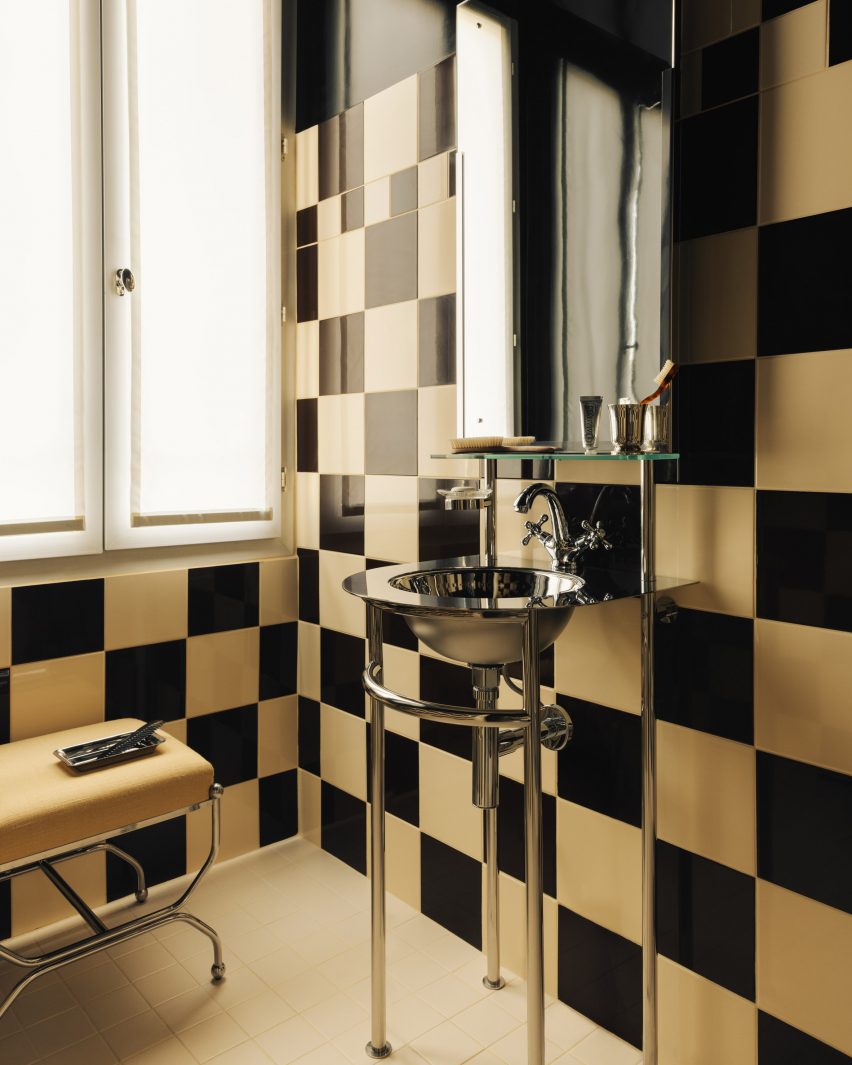
Other retro-inspired interiors featured on Dezeen include Bella Freuds penthouse apartment designed by Piercy & Company and a north London townhouse by Studio Hagen Hall.
The photography is by Ludovic Balay.